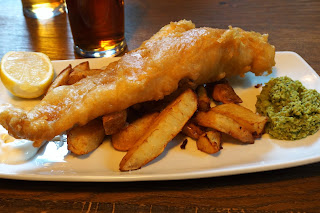July 7-13, 2018
July 7-13, 2018
Our recent trip to Britain was like an Oreo cookie. The filling was good, but it started poorly with an unexpected flight cancellation and unfortunately ended worse. I found out my mother passed as we were flying over my hometown. With a one-day turn-around to pay bills and clean the pool, we started the 24-hour two-day drive to the Midwest. On the plus side, it is always nice to visit with seldom-seen siblings and cousins.
We stayed with my sister and brother-in-law as payback for their previous visits. They are fortunate to live near the huge Weldon Spring Conservation Area that runs along the Missouri River. We took a hike with them after the wake and funeral. Little did I know it was the Nuclear Waste Adventure Trail. Apparently the park was the site of a WWII explosives plant and then later a Uranium purification facility. Cleanup occurred and then the rest was entombed in a huge mound and covered with rock.
From a parking lot we hiked a mile along a wildflower-lined trail to the disposal summit, the highest point in St Charles County. We then visited the nearby Interpretative Center. Aimee and my sister were getting the willies being so close to a Superfund Site. Neither would drink from the water fountains. I wasn't terribly concerned as Uranium is not particularly dangerous. It has a 4.5 billion year half-life. Uranium atoms rarely disintegrate and release radiation. And the water comes from the municipal drinking supply of the Missouri River. Unfortunately I did learn that local companies found the site a convenient dumping ground for everything hazardous, so we quickly hiked back to the car.
We made the long drive home. As if our latest adventure couldn't have more surprises, Interstate 10 was closed at the Arizona border due to a dust storm. The detour added an extra hour getting us in after dark on Friday the 13th. My mom would have been 98 today. I can see her shining down from heaven!
Our recent trip to Britain was like an Oreo cookie. The filling was good, but it started poorly with an unexpected flight cancellation and unfortunately ended worse. I found out my mother passed as we were flying over my hometown. With a one-day turn-around to pay bills and clean the pool, we started the 24-hour two-day drive to the Midwest. On the plus side, it is always nice to visit with seldom-seen siblings and cousins.
We stayed with my sister and brother-in-law as payback for their previous visits. They are fortunate to live near the huge Weldon Spring Conservation Area that runs along the Missouri River. We took a hike with them after the wake and funeral. Little did I know it was the Nuclear Waste Adventure Trail. Apparently the park was the site of a WWII explosives plant and then later a Uranium purification facility. Cleanup occurred and then the rest was entombed in a huge mound and covered with rock.
From a parking lot we hiked a mile along a wildflower-lined trail to the disposal summit, the highest point in St Charles County. We then visited the nearby Interpretative Center. Aimee and my sister were getting the willies being so close to a Superfund Site. Neither would drink from the water fountains. I wasn't terribly concerned as Uranium is not particularly dangerous. It has a 4.5 billion year half-life. Uranium atoms rarely disintegrate and release radiation. And the water comes from the municipal drinking supply of the Missouri River. Unfortunately I did learn that local companies found the site a convenient dumping ground for everything hazardous, so we quickly hiked back to the car.
We made the long drive home. As if our latest adventure couldn't have more surprises, Interstate 10 was closed at the Arizona border due to a dust storm. The detour added an extra hour getting us in after dark on Friday the 13th. My mom would have been 98 today. I can see her shining down from heaven!






























